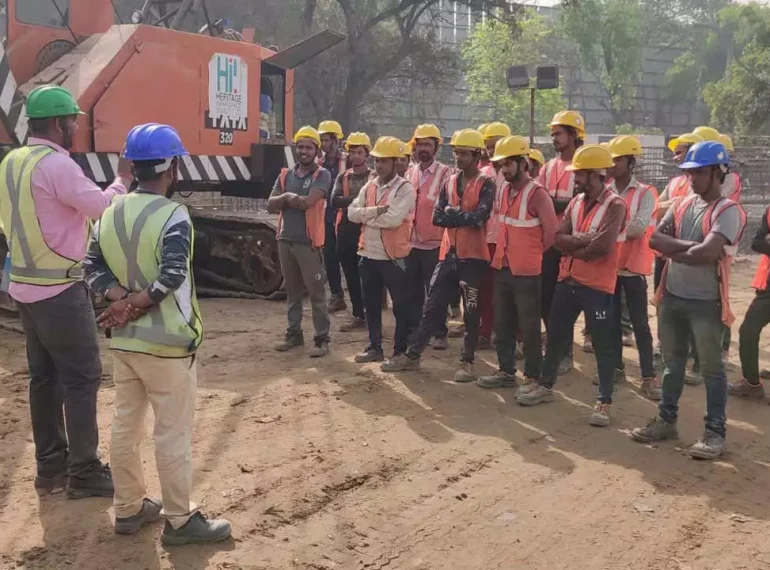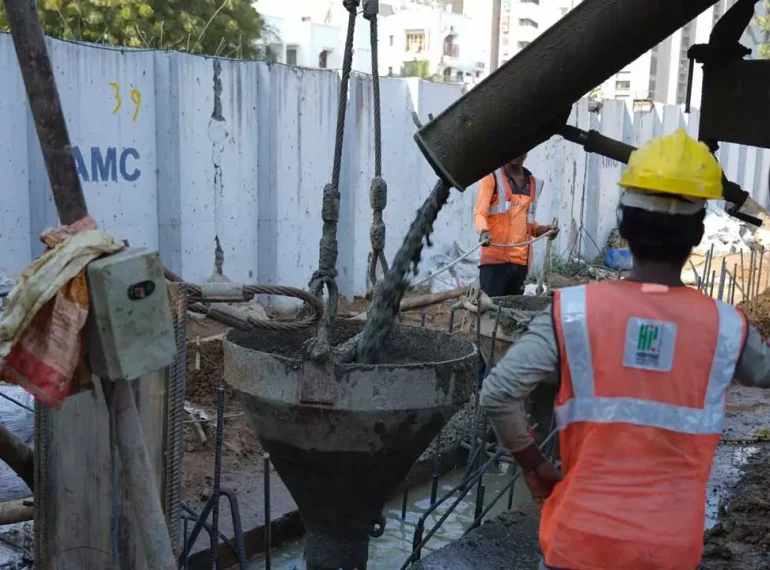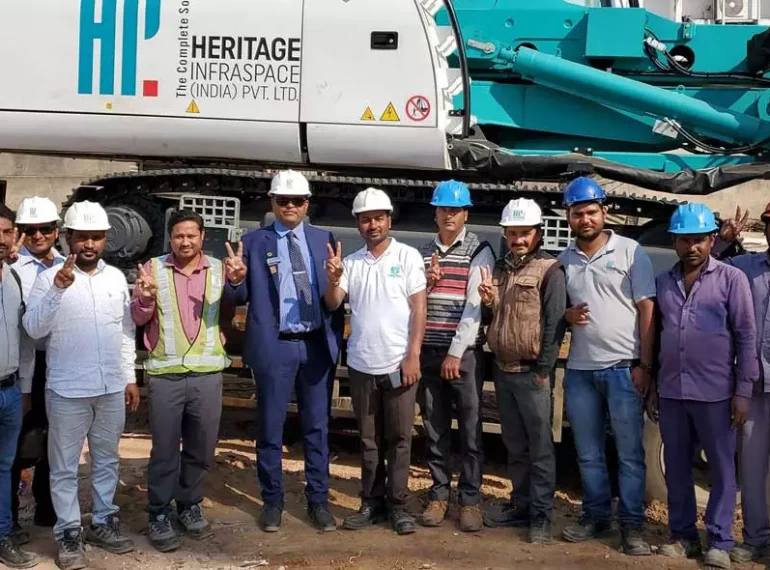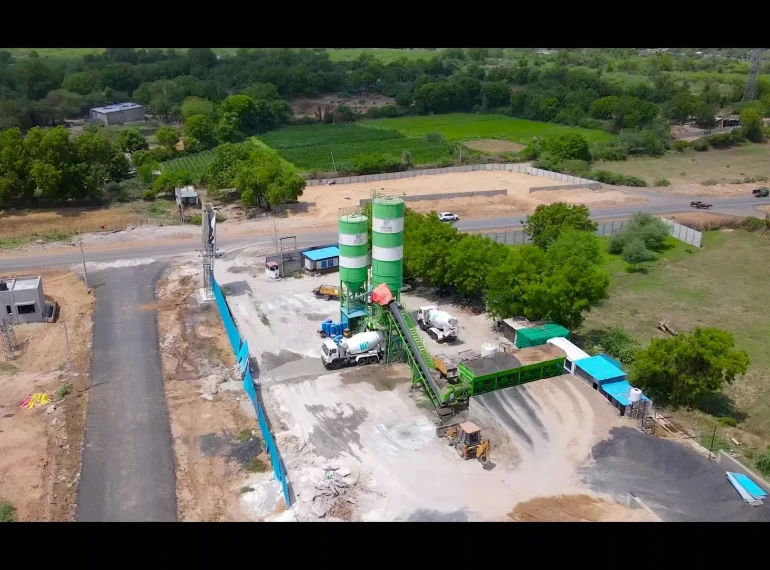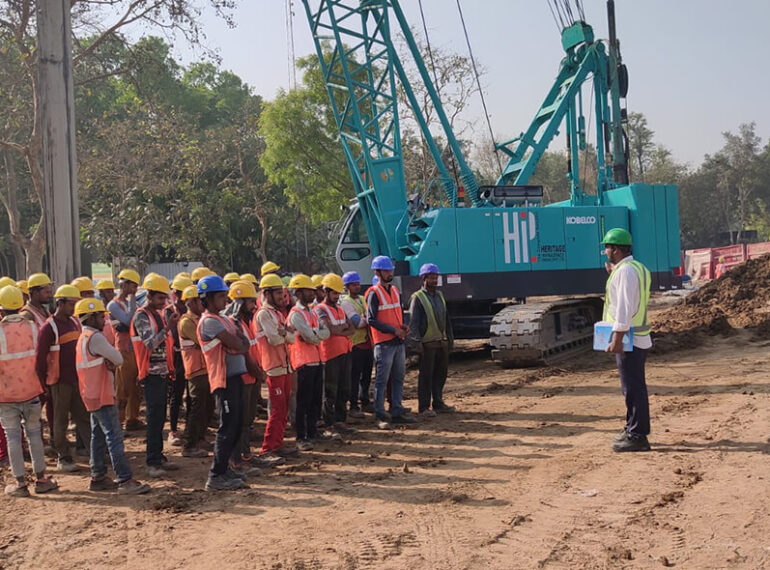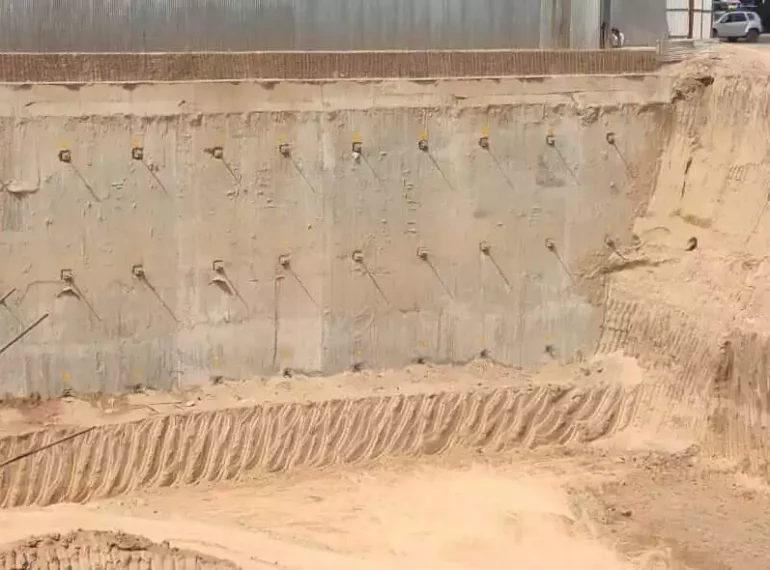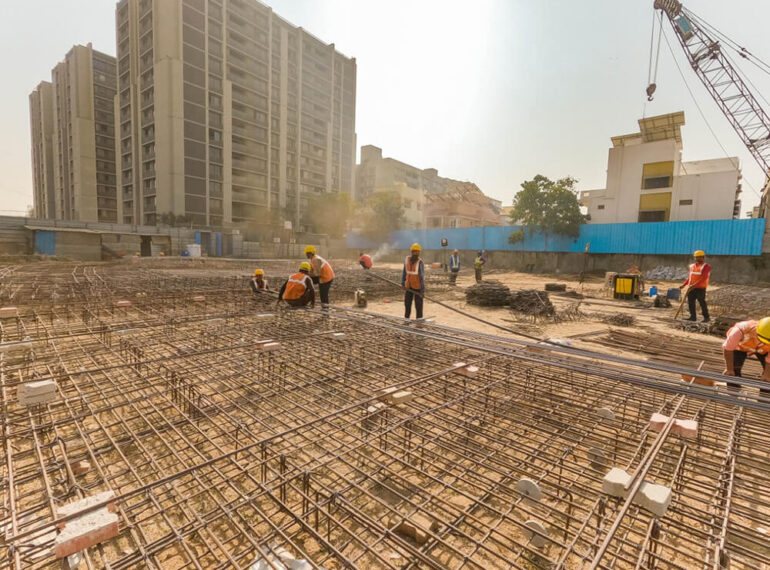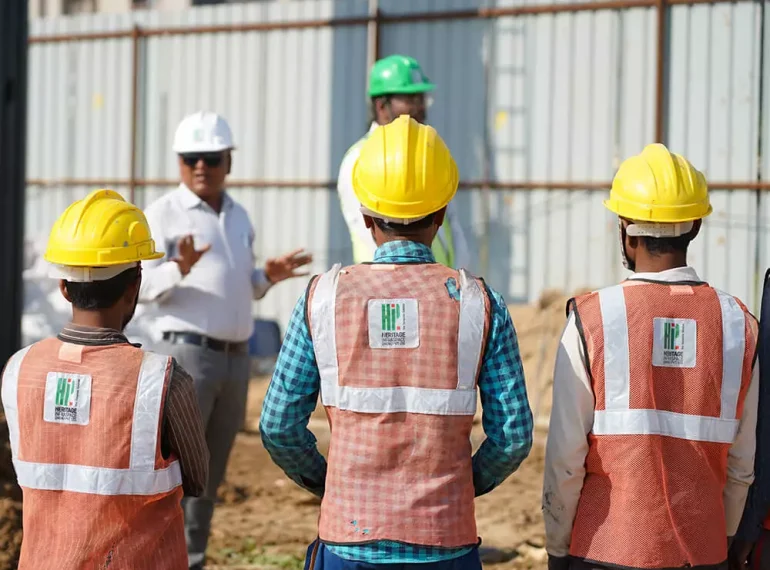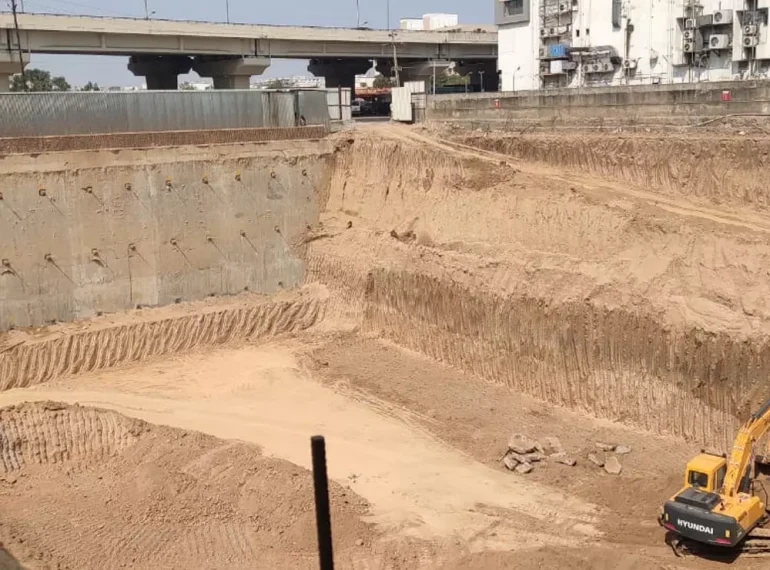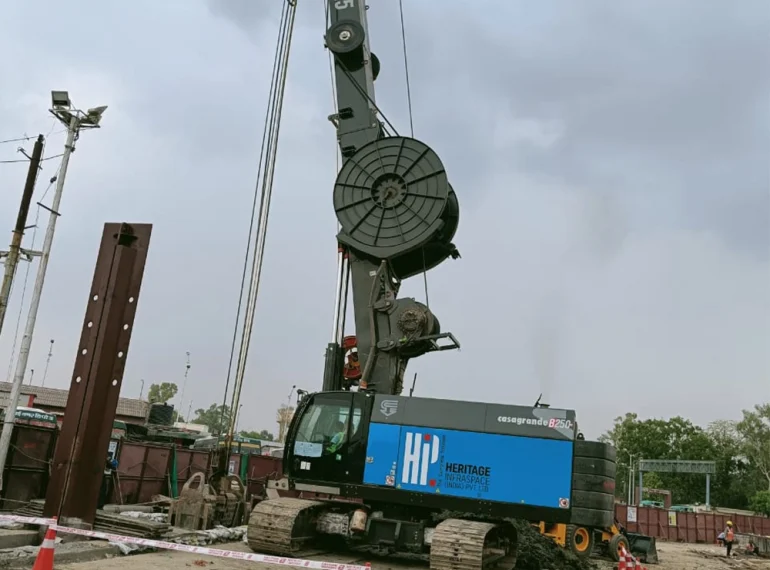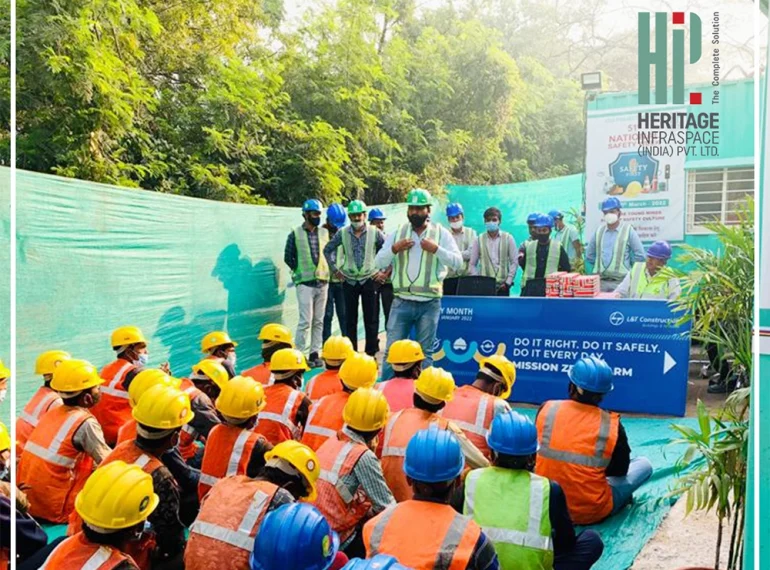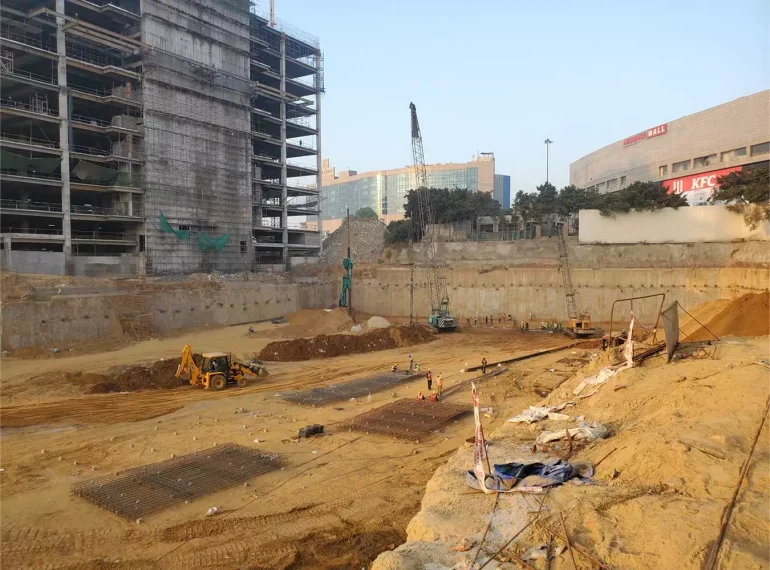It’s 2023 and circumstances are demanding every construction company in India to shift towards sustainable engineering solutions. This turn of tangent is seen in the deep basement construction as well.
Building deep basements in densely populated areas is a common challenge faced by construction companies in India. Excavation for basements can be a time-consuming and expensive process, especially in urban areas where space is limited. Additionally, the excavation process can cause environmental damage, making it essential to consider sustainable construction practices.
Diaphragm walls are one such solution that can provide a strong and stable foundation for deep basements while also contributing to sustainable construction practices.
How? Let’s unravel the answer from the very basics.
What are Diaphragm Walls?
Diaphragm walls are underground structural elements constructed with the aim to support the excavation work and provide a stable foundation for building structures. They are constructed by digging a trench, installing steel reinforcement and pouring concrete into the trench to create a wall that extends to the desired depth.
As an essential part of geotechnical engineering, they are used for a variety of applications, including building basements, tunnels and retaining walls. They are an efficient and effective solution for deep basement construction, as they provide a strong and stable foundation.
Challenges in Deep Basement Construction
Constructing deep basements presents numerous challenges, including excavation and support requirements.
For instance, in densely populated areas, excavation can be time-consuming and expensive. This only elevates the need to consider a more efficient and reliable construction approach and the top civil construction company in India is always on the lookout for sustainable solutions.
Furthermore while working in the older part of a city, the surrounding old and weakened infrastructure pose an extra threat to the whole process.
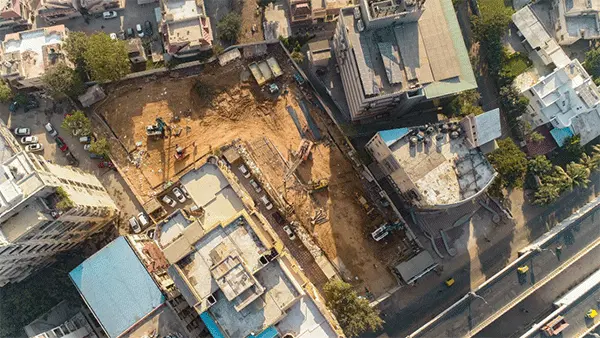
A top view of the limited space required for excavation in sustainable construction
The excavation process can cause vibrations that can affect the surrounding structures’ stability. To avoid any mishappenings engineers need to implement specialised techniques such as shoring and underpinning.
And somewhere between all these intricate necessities lies the responsibility to integrate more sustainable solutions. All of this makes deep basement construction a complex process that requires significant expertise, a skilled team and resources.
Sustainability in Construction
Sustainability in construction has become increasingly important over the years, and construction companies in India are embracing this concept. Sustainable construction practices are essential for reducing carbon emissions, minimising waste, and conserving resources.
The construction industry is responsible for a significant amount of global carbon emissions and reducing this impact is crucial to combating climate change. Sustainable construction practices can also help conserve natural resources by using materials more efficiently.
In this aspect, Diaphragm wall construction is turning out to be a champion.
Advantages of Diaphragm Walls for Deep Basement Construction
Diaphragm walls offer numerous advantages for building deep basements, like providing a strong and stable foundation that can support the weight of the structure above. This makes them ideal for building basements in densely populated areas where space is limited.
They also reduce the amount of groundwater ingress, preventing water from entering the basement and causing structural damage.
Furthermore, they can also support the surrounding structures during excavation, preventing damage to existing buildings and can be used to construct retaining walls. These retaining walls help prevent soil erosion and provide structural support to the surrounding areas.

Anchoring done for diaphragm wall construction
In addition to all of these, diaphragm walls also contribute to sustainable construction practices, and here is how:
Reduce Waste
One, among many environment-friendly ways, diaphragm walls contribute by significantly cutting down on the construction waste produced.
The excavation process utilised for diaphragm wall construction generates less waste than traditional excavation methods. This is because diaphragm retaining walls can be built in greater depths, significantly eliminating the need for multiple excavations and reducing the amount of waste generated.
Reusable Formwork
Diaphragm walls can be constructed using recycled materials, reducing the need for new resources and hence also minimalising resource wastage.
Now add the element of a retractable anchor and you take a leap into sustainability. As the top geotechnical infrastructure company in India, HIPL utilises retractable anchors in its construction projects.
Material Efficiency
Additionally, the excavation process required for diaphragm wall construction generates less waste than traditional excavation methods. This can be seen in terms of the slurry used in the construction.
Since the slurry is reusable it helps in reducing the environmental impact caused due to the construction activity.
Efficient use of Space
The construction of diaphragm walls can happen within close proximity to existing buildings. This ability permits engineers to efficiently use space in urban areas.
Longevity
Diaphragm walls are designed to be durable and long-lasting, which means that they require minimal maintenance and repair over time. This reduces the need for additional construction and reduces the amount of waste generated as a result.
Additionally, they act as the supporting structure for multilevel buildings, dams, and meteors above them. With a strong foundation, the longevity of the mega structures also increases.
These were the foremost ways in which deep basement construction is moving the engineering sector towards a sustainable future.
Life Cycle Assessment: A way to improve D-wall environmental impact
A life cycle assessment is essential when building basements. It is a tool used to evaluate a product’s or process’s environmental impact from the cradle to the grave.
It takes into account the raw materials used, the manufacturing process, transportation, use, and disposal. Conducting a life cycle assessment for deep basement construction can help identify areas where environmental impact can be reduced
Diaphragm walls can help improve the environmental performance of such assessments. As previously mentioned, diaphragm walls can be constructed using recycled materials, reducing the need for new resources. Additionally, the excavation process generates less waste than traditional excavation methods, reducing the environmental impact of deep basement construction.
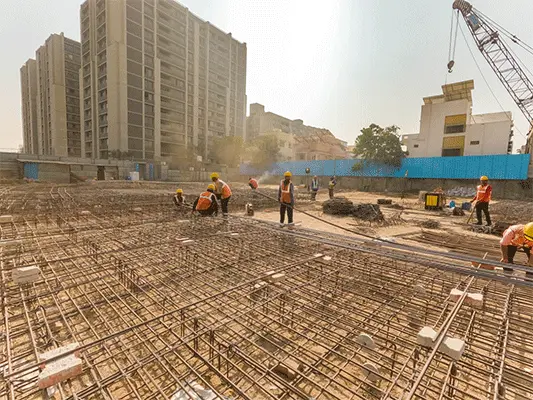
Diaphragm wall cages being set
To conclude:
Diaphragm walls are a sustainable solution for building deep basements, providing a strong and stable foundation while reducing environmental impact. More energy and resource-efficient practices are essential for reducing carbon emissions, minimising waste, and conserving resources. Diaphragm walls can contribute to the stated practices.
By using recycled materials and generating less waste, diaphragm walls help reduce the environmental impact of deep basement construction.
Construction firms in India can benefit from using diaphragms and contribute to modern practices of sustainability. As urban areas continue to grow and space becomes limited, sustainable solutions like diaphragm walls will become increasingly important in the construction industry.
Any top civil construction company in India planning to build modern residential or commercial structures should consider using diaphragm walls as a sustainable solution for deep basement construction.
By doing so, they can reduce their environmental impact and contribute to a more sustainable future for the construction industry and infrastructure companies in India.
Visit www.heritageconstruction.com to know more about our efforts in sustainable construction.





